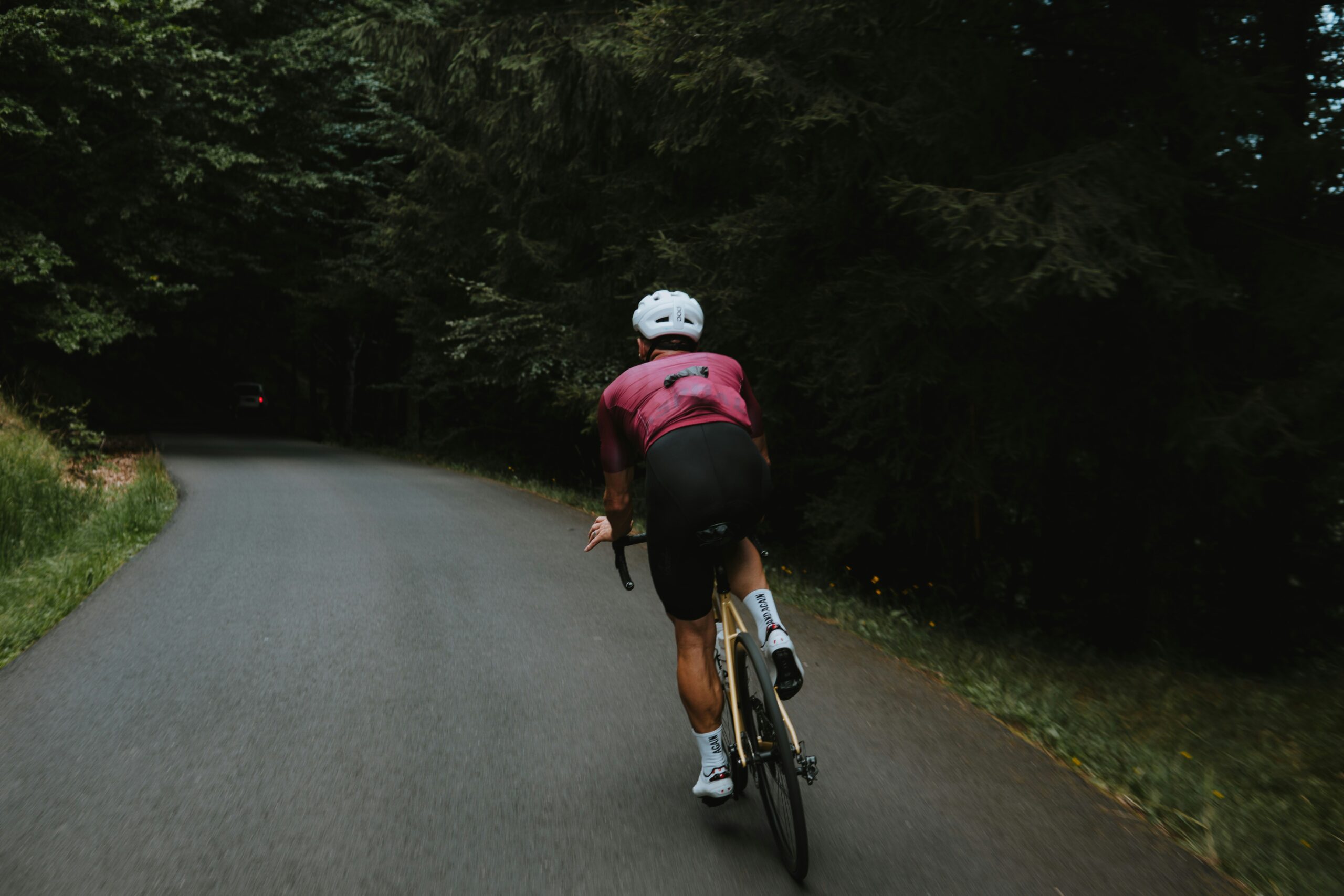The key to cycling success lies not in sporadic intense efforts but in methodical foundation building. This comprehensive guide explores how proper base conditioning sets you up for your best cycling season yet.
What is Base Conditioning in Cycling?
Base conditioning, often called base training, is the foundational phase of a cyclist’s training plan where endurance, efficiency, and aerobic capacity are developed. This critical period lays the groundwork for more intense training phases to follow.
At VeloVostra, we emphasize that base conditioning isn’t just about logging miles—it’s about strategic training that prepares your body for the demands of your cycling goals, whether you’re a competitive racer or a dedicated recreational rider.
Why Base Training Matters
The importance of proper base conditioning cannot be overstated:
- Aerobic Development: Builds mitochondrial density and capillary networks that improve oxygen utilization
- Muscular Endurance: Trains slow-twitch muscle fibers for sustained power output
- Fat Metabolism: Enhances your body’s ability to use fat as fuel, preserving glycogen stores
- Mental Fortitude: Develops the psychological resilience needed for longer efforts
- Injury Prevention: Gradually conditions tendons, ligaments, and joints to handle increased training loads
Research shows that cyclists who dedicate sufficient time to base training experience fewer plateau periods and injuries during peak training phases.
The Science of Periodization in Base Training
Periodization—the systematic planning of athletic training—is essential for effective base conditioning. This approach divides your training into distinct phases, each with specific objectives.
Traditional Periodization Model for Cyclists
- Preparation Phase (4-8 weeks)
- Focus on general fitness
- Cross-training activities
- Low-intensity, high-volume riding
- Technical skill development
- Base Phase (8-12 weeks)
- Divided into Base 1, Base 2, and Base 3
- Progressively increasing endurance rides
- Introduction of low-intensity intervals
- Strength maintenance work
- Build Phase (transition from base to specialized training)
- Higher intensity workouts
- Sport-specific training
- Reduced volume, increased intensity
As our comprehensive periodization guide explains, this structured approach optimizes adaptations while minimizing overtraining risks.
Key Components of Effective Base Training
Zone 2 Training: The Sweet Spot
The cornerstone of base conditioning is Zone 2 training—steady, conversational-pace efforts that develop aerobic capacity without excessive stress. This intensity level (typically 60-75% of your maximum heart rate) optimizes mitochondrial development and fat metabolism.
A recent study published in the Journal of Applied Physiology found that prolonged Zone 2 training significantly improved endurance performance markers in cyclists, even among those with several years of training experience.
Long, Steady Endurance Rides
The backbone of base conditioning is the long, steady ride. These extended efforts:
- Train your body to utilize fat as fuel
- Develop mental toughness
- Improve cycling economy
- Condition supporting muscles for extended saddle time
Start with rides 15-20% longer than your typical training session and gradually increase by 5-10% weekly until you reach the duration relevant to your goals.
Progressive Overload: The Growth Principle
Base conditioning follows the principle of progressive overload—gradually increasing training stress to stimulate adaptation. This can be achieved through:
- Volume progression: Increasing weekly riding time
- Frequency adjustment: Adding additional training days
- Duration extension: Lengthening individual rides
- Terrain variation: Incorporating more challenging routes
Our progression planning calculator helps cyclists implement sustainable progression without overreaching.
Creating Your Base Training Plan
Duration: How Long Should Base Training Last?
The optimal duration of base conditioning depends on several factors:
- Experience level: Newer cyclists may need longer base periods (12-16 weeks)
- Previous fitness: Well-trained cyclists might require 8-12 weeks
- Annual goals: Early-season events may necessitate a compressed base period
- Available time: Real-world constraints often dictate practical possibilities
For most cyclists, a 12-week base period provides sufficient time to develop the aerobic foundation needed for more specialized training.
Weekly Structure: A Balanced Approach
A balanced base training week typically includes:
- 3-4 Zone 1-2 endurance rides
- 1 longer endurance ride (progressively increasing in duration)
- 1-2 technique or skill-focused sessions
- 1-2 complementary strength or mobility sessions
- 2-3 rest or active recovery days
This structure provides sufficient training stimulus while allowing for adequate recovery between sessions.
The Critical Role of Rest and Recovery
Perhaps the most overlooked aspect of effective base conditioning is recovery. Training creates the stimulus for adaptation, but recovery is when adaptation actually occurs.
Recovery Strategies for Cyclists
- Sleep Optimization
- Aim for 7-9 hours of quality sleep
- Maintain consistent sleep/wake cycles
- Create a sleep-conducive environment
- Nutritional Recovery
- Consume carbohydrates and protein within 30-60 minutes post-exercise
- Hydrate with electrolyte-rich fluids
- Focus on anti-inflammatory foods
- Active Recovery
- Light spinning (30-45 minutes at 50-60% MHR)
- Cross-training activities like walking, swimming, or yoga
- Mobility work targeting cycling-specific patterns
- Stress Management
- Meditation or mindfulness practices
- Time in nature
- Social connection and enjoyment
As our recovery optimization guide details, neglecting recovery can undermine even the most perfectly designed training plan.
Common Base Training Mistakes to Avoid
Training Too Hard
The most prevalent mistake is training too intensely during base conditioning. The temptation to push harder can sabotage aerobic development and lead to early-season burnout.
Signs you’re training too hard include:
- Declining performance despite increased effort
- Persistent fatigue
- Elevated resting heart rate
- Sleep disturbances
- Decreased motivation
Insufficient Volume
While intensity should remain moderate, volume is crucial during base conditioning. Insufficient training volume fails to create the necessary stimulus for aerobic adaptations.
Skipping Strength Work
Neglecting complementary strength training during base conditioning can lead to muscular imbalances and power limitations later in the season.
Inconsistency
Sporadic training with large fluctuations in volume or intensity prevents the steady progression needed for effective base conditioning.
Monitoring Your Base Training Progress
Tracking your progress during base conditioning helps ensure you’re on the right track and making appropriate adaptations.
Key metrics to monitor include:
- Heart Rate Responses: Decreasing heart rate at given power outputs
- Rate of Perceived Exertion (RPE): Decreasing effort sensation at given intensities
- Power Duration Curves: Gradual improvements in sustained power
- Recovery Quality: Improved recovery between sessions
- Resting Metrics: Stable resting heart rate and heart rate variability
Modern training platforms make tracking these metrics straightforward, allowing for data-informed adjustments to your base conditioning plan.
Adapting Base Training to Your Schedule
Not everyone has 15-20 hours weekly for ideal base conditioning. Here’s how to adapt base training principles to different time constraints:
For Time-Crunched Cyclists (6-8 hours/week)
- Focus on quality over quantity
- Incorporate “sweet spot” training (upper Zone 3)
- Maximize weekend training time
- Ensure exceptional recovery practices
- Extend the base period if possible
For Moderate-Time Cyclists (9-12 hours/week)
- Balance traditional Zone 2 work with focused intervals
- Include one longer ride weekly
- Incorporate strength training twice weekly
- Distribute training across 4-5 days
For High-Volume Cyclists (13+ hours/week)
- Follow traditional periodization models
- Emphasize Zone 2 training with progressive volume
- Include regular recovery weeks (every 3-4 weeks)
- Monitor for signs of overtraining
Nutrition During Base Conditioning
Nutritional strategies during base conditioning should support high training volumes while promoting metabolic adaptations.
Key nutritional focuses include:
- Fueling longer rides with appropriate carbohydrate intake
- Supporting recovery with protein-rich meals
- Promoting fat adaptation through strategic low-carbohydrate sessions
- Maintaining adequate micronutrient intake for optimal physiological function
Visit our cycling nutrition guide for detailed nutritional recommendations.
Transitioning from Base to Build
The transition from base conditioning to build phases should be gradual, incorporating:
- Introduction of higher intensity intervals
- Reduction in overall volume
- Increase in training specificity
- Maintenance of aerobic conditioning
This transition period typically spans 2-3 weeks and serves as a bridge between foundational aerobic work and more specific performance training.

Conclusion: The Patient Path to Peak Performance
Base conditioning isn’t glamorous—it lacks the intensity and excitement of race-specific training. However, it’s the foundation upon which all cycling performance is built.
At VeloVostra, we’ve seen cyclists transform their performance through dedicated, well-structured base conditioning. The patience and discipline required during these months pay dividends throughout the season in improved performance, greater resistance to fatigue, and reduced injury risk.
Remember: champions are made in the off-season, during those long, steady miles when no one is watching. Invest in your base, and your cycling performance will reach new heights.
Ready to take your base conditioning to the next level? Explore our customized training plans designed to optimize your specific cycling goals.





Leave a Reply